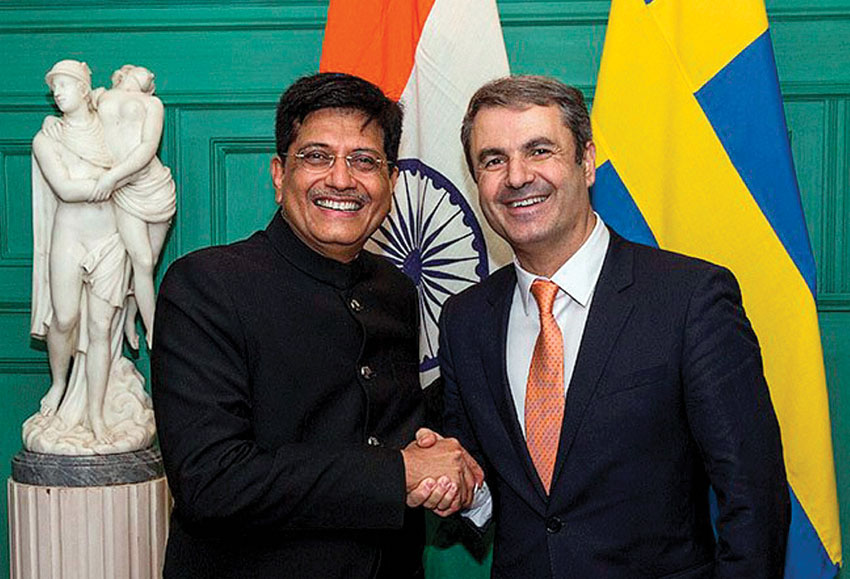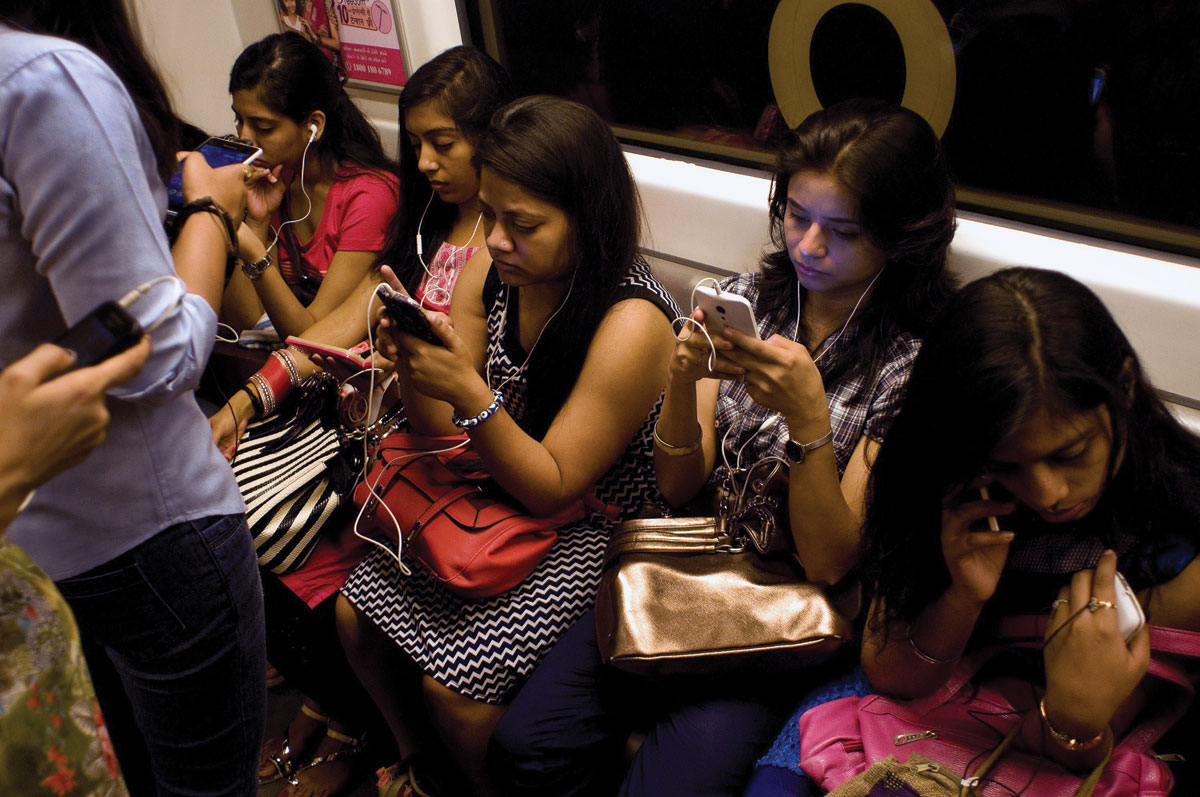INDIA HAS A PROBLEM OF PLENTY TOO
Indian women use their smartphones as they travel in the metro coach reserved for women in New Delhi. (Anna Zieminski/AFP/Getty Images)
It is heartening to note that the Indian economy is performing well in certain sectors, where supply exceeds demand, where the consumer is calling the shots, writes Siddharth Srivastava. – @Siliconeer #Siliconeer #narendramodi @namo #namo #India #RelianceJio #IndiGo #SpiceJet #GoAir #AirAsia #MobileData #Oil #Coal
It is not often that one gets to hear that India has a problem of plenty, except perhaps in cricket where Shikhar Dhawan, K.L. Rahul, Rohit Sharma, Gautam Gambhir, Ajinkya Rahane are all vying for the openers slot for the upcoming series against England followed by the Champions Trophy. Otherwise, there is a struggle and shortage for anything, name it: water, power, parking, quality education institutes, sanitation and clean air. Not a year passes without the government having to grapple with steep price rises in food and vegetables such as tomatoes, onions or pulses as demand overshoots supply. Every summer farmers have to fight drought, with the debt stricken left with no other course than suicide.
Even in sports, it was only towards the dying stages of the Rio Olympics that Sakshi Malik and P.V. Sindhu saved us the blushes by winning medals. However, it is heartening to note that the Indian economy is performing well in certain sectors, where supply exceeds demand, where the consumer is calling the shots. Examples include mobile data and aviation. In a report last month, International Air Transport Association (IATA) has said that India is among the five fastest growing aviation markets in the world. The country is expected to become the world’s third largest market by 2026, bringing an additional 322 million fliers into the sector.
Needless to say, a number of low cost carriers led by IndiGo, SpiceJet, GoAir and AirAsia are changing the dynamics of air travel in India. More and more people are opting to fly short distances such as between New Delhi to Chandigarh, Jaipur or Agra, due to competitive fares that are often cheaper than rail, if booked a few weeks in advance. Due to multiple carriers, flights are available through the day to suit passenger needs. Moving on from aviation, the launch of the Jio platform by Reliance Industries has completely altered the dynamics of unlimited mobile data usage at very good speeds. Competitors such as Airtel, Vodafone and Idea are now offering 4G packages at throwaway prices to take on Jio. The consumer, of course is the main beneficiary of such largess.
One GB data that was available for Rs. 250 (almost $4) is now being offered at Rs. 50 (less than $1). Watching YouTube videos on cell phones has never been cheaper. Looking at core sectors of the economy, coal, used to produce electricity, is now a commodity available in abundance after years of insufficiency and import. In 2015-16, the state-owned Coal India Limited (CIL), the country’s monopoly producer of the dry fuel, achieved a record production of 536 million tons, an 8.5% growth year-on-year. Coal secretary Anil Swarup recently said that the government is concerned about the coal oversupply situation that is fast emerging.

The official informed that as on March 31, 2016, there was a balance of 56 million tons of coal as inventory at CIL pit heads and around 32 million tons at power plants. Swarup said: “I say I would rather be in this situation than what I was a couple of years ago when everyone was running around…to reach out coal to these power plants. I am glad we are where we are.” As a matter of fact, in order to boost domestic off-take, Piyush Goyal, minister for power, coal, new & renewable energy recently said that the government is looking at finding ways to substitute all imported thermal coal. “To this effect I have asked BHEL to find a design to modify plants that were built only to take imported plants thus enabling them to consume domestic coal,” Goyal said.
Another sector where Indians are able to consume pretty much as much as they want without worrying about impending paucity is fuel, turning India into one of the biggest importers of crude oil in the world. As oil and gas prices have crashed globally, the forex outgo has been limited. India’s fuel retail market is estimated at Rs 7.5 trillion. About 6.4 million tons of diesel, two million tons of gasoline and half a million tons of jet fuel are sold in the country every month. Gasoline consumption is growing at 14.5% a year, diesel at 7.5% and jet fuel at 8.7%, according to official figures. The International Energy Agency (IEA) has projected India will lead the world in oil demand. “India will be the fastest-growing crude consumer in the world through 2040, adding 6 million barrels a day of demand, compared with 4.8 million for China,” IEA has said.
British energy major BP was recently granted approval by the Indian government to set up 3,500 gas stations, becoming the second overseas player after Shell to enter the fast growing transportation fuel retailing business in the country. Fuel retail in India is presently dominated by the three state-owned oil marketing companies, Indian Oil Corp, Bharat Petroleum and Hindustan Petroleum, which together operate nearly 93% of the 56,000 odd outlets in the country. Reliance Industries and Essar Oil are the two private firms trying to make a mark. Given India’s social and economic diversity, it is often the case that negativities end up garnering disproportionate attention. While it is true that the country has a long way to go for the proverbial “acche din” to arrive, it could do all of us some good to sometimes celebrate our achievements.


